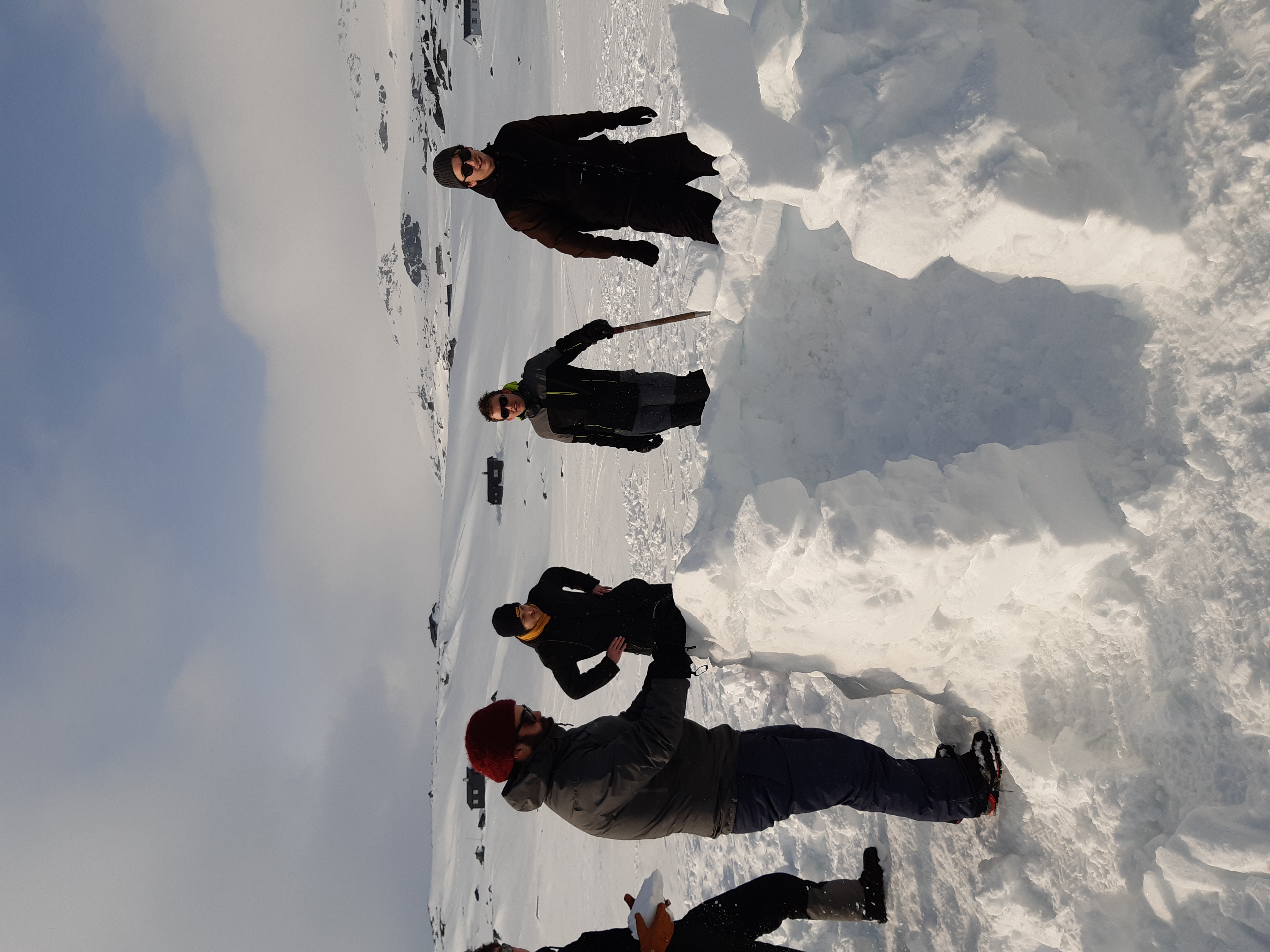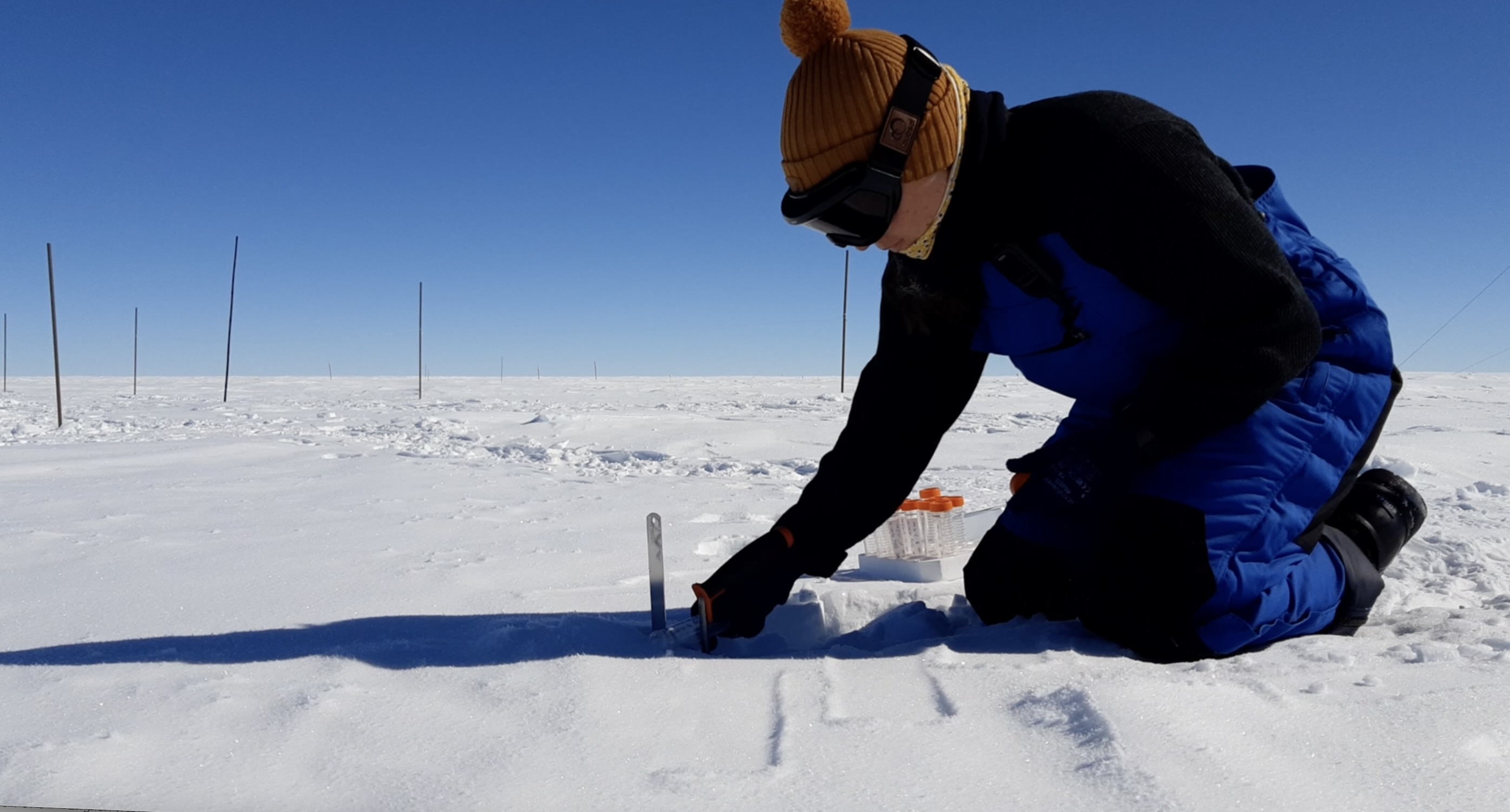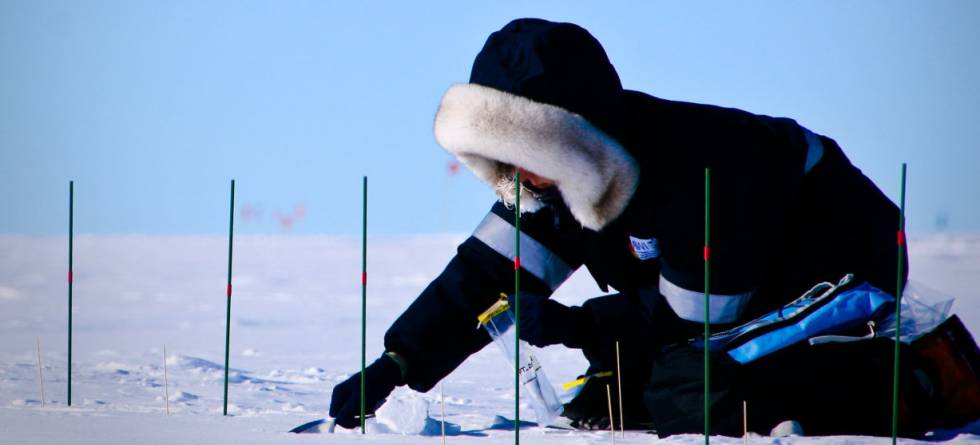When snow forms in the atmosphere, the water isotopic composition of heavy and light water is like a ‘fingerprint’ of the climate that is captured by the snowflake. Ice cores contain a uniquely precise climate record of these “fingerprints”.
- To decode the paleoclimate signal from ice cores, we need to understand how the climate changes the isotopic composition of snow, says researcher Laura Jasmin Dietrich.
For more than 50 years, scientists believed that only the time before the snow falls to the surface is important for climate signal formation in the ice core.
- In SNOWISO, we have found that the isotopic fingerprint is in fact changed by vapor exchange between the snow at the surface and the atmosphere for months to even years after the snow has deposited at the surface, says Dietrich.
Vapor exchange important
According to the research, the influence on the climate signal during this vapor exchange is large. But it does not mean that we cannot trust earlier reconstructions of the past temperature from ice core records.
- But having now understood how vapor exchange leaves its own fingerprint in the ice allows us to obtain refined reconstructions from ice cores that give better insights into the past, says Dietrich.
The DEEPICE project is an innovative training network for a new generation of 15 early-stage researchers in instrumentation, ice core analysis, statistic tools and glaciological and climate modelling. They study proxies in deep ice cores to understand the past climate dynamics in Antarctica.

A year in Antarctica
PhD candidate at Geophysics and the Bjerknes Centre Inès Ollivier spent a year in Antarctica where she tended instruments that gives us an understanding on how snow accumulates into the massive ice sheet that we know as the Antarctic. She is now in her last year as a PhD-student at the University of Bergen. Her study is based on field observations and samples taken regularly all-year round at Dome C, high up on the East Antarctic Plateau.
- We aim at quantifying the overall impact of the processes at the surface of the Antarctic ice sheet, by comparing time series over five years of the precipitation and the snow surface isotopic composition. We also use a very simple numeric model to try to reproduce the variability observed in the snow surface with the precipitation falling onto the ice sheet, says Ollivier.

The latest discoveries
In the study they find that the snow surface isotopic composition is quite different than the precipitation.
- That means that processes at the surface of the ice sheet are responsible for the modification of the precipitation isotopic composition after snowfall and before the snow surface layer is buried deeper in the snowpack. Our study provides the first quantification of the impact of surface processes on the isotopic signal found in the snow.
In this video, Inès explains why the reconstruction of past temperatures by the analysis of ice cores is challenging, as well as the processes that affect the record of the temperature.
Looking at glacial-interglacial cycles
PhD student at DEEPICE Daniel Gunning has done research on glacial-interglacial cycles, which describes the periodic growth and decay of large ice sheets over North America and northern Europe during the last 2.5 million years.
- Basically, we know that minor changes in the Earth's orbit, known as Milankovitch cycles, help drive these cycles in ice volume, but it cannot explain every aspect of glacial-interglacial cycles that we observe in our records of past climate change. For my project, I'm developing a simple model to investigate these processes, and how these relatively minor changes in the Earth’s orbit are translated into large-scale changes in the Earth’s climate.
In this video, Daniel presents the glacial-interglacial cycles that have characterised the climate over the last two million years, during the Pleistocene period, and explains what the mid-Pleistocene transition is.
EU-funded DEEPICE started in 2021 and will last until the end of 2024.

